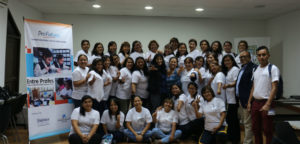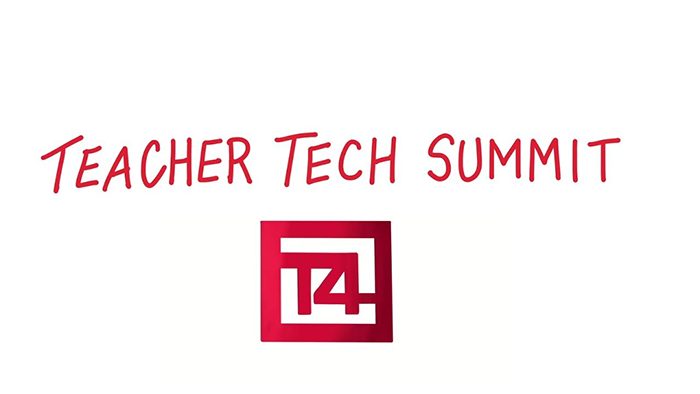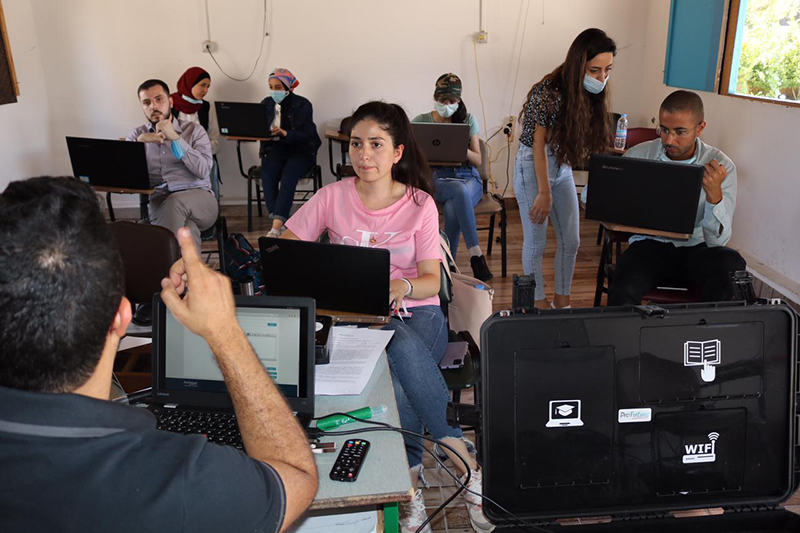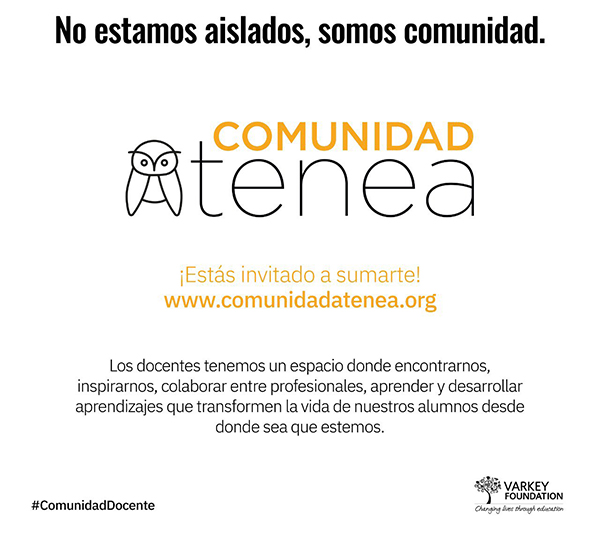
Image: Ismael Martínez.
Does what we do work? How are others doing it? Does it work better than what I’m doing? In one way or another, teachers all over the world have asked themselves these very questions. That’s because scientific and academic knowledge is not the only valid source of knowledge for the educational system as a whole or to be taken account in education policies.
The truth is, teachers are the great knowledge generators on educational practices. What each teacher does in their classroom has great value for the educational ecosystem: for their colleagues and the academic environment. What’s more, according to Macarena Verástegui, author of the guidebook Miradas que mejoran, it serves for “better research and substantiates and strengthens the discourse of the teaching profession in the face of education policies and strengthen the profession itself.”
What does observation of teaching practice consist of?
To do so, the observation of teaching practice is a fundamental strategy in the field of education. It consists of the evaluation and monitoring of the activities and teaching methods used by teachers in the classroom with the purpose of having a better quality of teaching and learning for the students. This practice implies a deliberate and systematic look at the educational actions that take place in the classroom and the school community (Verástegui and Pérez, 2021).
Observing a teacher has several key objectives, which include:
- Evaluate their teaching practice: Helps identify areas for improvement and strengths.
- Learn from their teaching practice: Provides for the acquisition of new knowledge and pedagogical strategies.
- Create practice-based educational knowledge: Contributes to the generation of new ideas and approaches in education.
When applied effectively, observing a teacher has a significant impact on:
- Identifying strengths and areas for improvement: Helps teachers recognised what they’re doing well and where they can improve.
- Adapting to the students’ needs: Helps adjust the teaching practice to the special needs of the students and the school context.
- Promotion of teaching collaboration: Promote a culture of teamwork at the schools, where teachers share experiences and knowledge.
- Professional growth: Empowers teachers’ ongoing development and exchange of best practices.
Teachers are great generators of knowledge about educational practice.
Thinking… to the Thinkery!
Aristophanes used it to poke fun at Socrates and J.K. Rowling described it as a magical object that allowed people to relive their memories in the form of liquid thoughts. However, in the reality of the 21st century, Pensadero, or the Thinkery, is a teacher-to-teacher observation programme developed by the Fundación ProMaestro for the purpose of facilitating mutual observation between teachers, promoting the professional development through the exchange of experiences and collaboration between colleagues. A space and time to share, discuss and agree in which teachers help each other to design and validate the educational practices they want to implement or those that they already carried out but have not yet been able to validate. (Fundación ProMaestro, 2016).
Pensadero is a short, open and cyclical collaborative programme that adapts to the needs and objective of each school. This means it can be repeated as many times as the needs and objectives of the school and teaching staff require.
The programme functions through a series of five phases:
- The purpose of this stage is to share the objective of the programme and adapt them to the school’s reality. Determine what we need to observe and why, generate ideas to reach this goal, design an activity that pursues this objective and share this design with our colleagues.
- Used to construct the observation criteria and select the tools to gather information on the most suitable teaching practice.
- In this stage, the teaching practices are actually carried out by between the teachers.
- The objectives of this stage are to reflect on teaching practice based on the evidence collected, offer and receive feedback after the classroom observation, and discuss with colleagues the educational impact of the practices designed and executed.
- Compilation and dissemination. In this final stage, the results and feedback obtained are systematised, the results are presented to the faculty and shared with other schools.
Regarding the results, qualitative research carried out at six schools in the Community of Madrid, Spain, confirmed that through classroom observation and feedback between colleagues, teachers feel more recognised, supported and valued in their professional work (Verástegui and González, 2016). The teachers’ satisfaction is widespread. At the end of the programme, 86% of the participating teachers expressed their desire to maintain these experiences as standard practice (Díaz Sotero, 2021).
Entre Profes: digital collaborative learning

Like the Pensadero, the Between Teachers teacher training programme, from ProFuturo and Empieza por Educar, relies on the creation of virtual communities, observation and peer feedback to improve teaching strategies in the classroom. In the case of Between Teachers, the advantages of the digital era are also taken advantage of to bring the benefits of this practice to remote and vulnerable communities in which, in addition, teachers’ isolation and loneliness is another obstacle that hinders the learning of their students.
The programme’s goal is that, at its end, teachers become professionals with more effective work tools and have a real impact on their students, conceiving peer learning as a fundamental tool for their professional development and generating new spaces for learning experiences sharing.
The programme consists of five modules that address essential aspects for the development of teaching skills:
- Observation and Feedback: Teaches how to observe and offers teacher-to-teacher constructive feedback.
- Classroom Management: Explores techniques to create a favourable environment for learning and practice.
- Motivation: Addresses the importance of motivating students and changing their perception of learning.
- Planning: Helps align lesson planning with learning objectives.
- Verification of Learning: Teachers how to ask effective question to evaluate students’ learning and adjust the teaching to their needs.
Teacher observation and collaborative work between teachers are two fundamental elements in the ongoing improvement of education. Observation provides a window into our classrooms, allowing us to identify strengths and areas for improvement in our teaching, as well as adapt to the students’ changing needs. Collaborative work between teachers encourages the creation of learning communities in which experiences and successful strategies are shared and professional development can flourish.
The combination of teacher observation and peer collaboration is essential for the transformation of classroom teaching and learning processes. They are two essential aspects to significantly strengthening didactic planning and observation. When teachers work as a team, from their daily work environment, a transformation occurs that involves a shared and continuous learning process based on real practice. The common objective is to improve performance, applying new pedagogical strategies or improving existing ones. Ultimately, this approach promotes collaborative metacognition, ideally in a network, where teachers deliberately monitor and direct their classwork dynamics to raise the quality of the education they offer their students.
References
Díaz Sotero, P. (29 April, 2021). Observación entre docentes: “Lo más valioso de lo que sé lo he aprendido de mis compañeros.” Actualidad Docente. Available at https://actualidaddocente.cece.es/a-fondo/observacion-entre-docentes-lo-mas-valioso-de-lo-que-se-lo-he-aprendido-de-mis-companeros/
Fundación ProMaestro. (2016). Un pensadero, un modelo de formación entre iguales.
ProFuturo Observatory. (2022). Between Teachers: collaborative learning and mentoring among teachers. Fundación ProFuturo. Available at https://profuturo.education/observatorio/experiencias-inspiradoras/entre-profes-aprendizaje-colaborativo-y-tutorizacion-entre-docentes/
Verástegui, M. and González, P. (2019). Pensadero de maestros: Una dinámica docente de práctica reflexiva. Profesorado, Revista de Currículum y Formación del Profesorado, 23(4), 152–173. https://doi.org/10.30827/profesorado.v23i4.11715
Verástegui, M. and González, P. (2021). Miradas que mejoran. Guía para la observación de la práctica educativa. Fundación ProMaestro. Available at https://www.promaestro.org/documentos/fundacion_promaestro_miradas_que_mejoran.pdf






